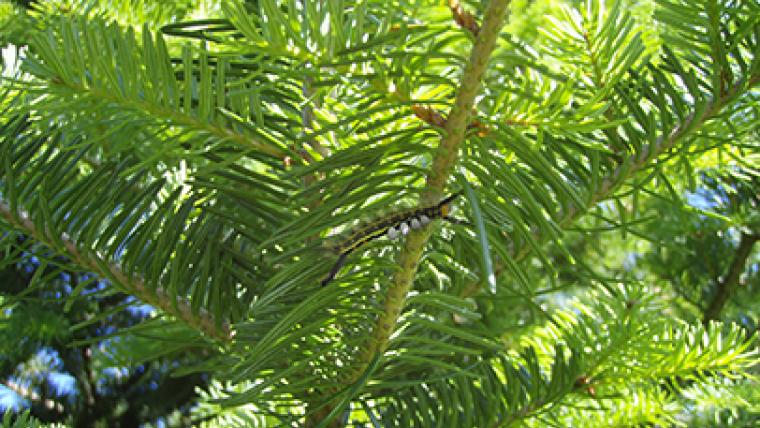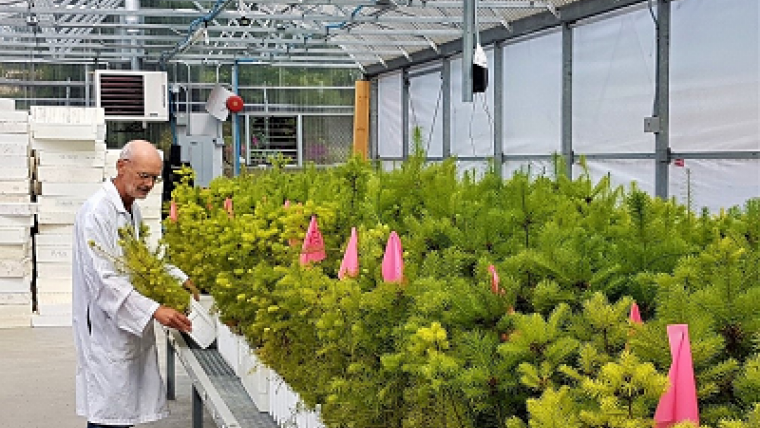New Method for Detecting Pine Wood Nematodes
August 2018
By Chantal Hunter
A new method for detecting nematodes in pine wood is facilitating the export of Canadian forest products.
Canada is the world’s leading exporter of softwood lumber, exporting about eight billion dollars’ worth annually. Softwood, which comes from conifer trees such as pine, fir or spruce, is used for a wide range of applications from home building to paper products.
However, some international markets have imposed trade restrictions on Canadian softwood for fear that it may contain pine wood nematodes, which could be harmful to their conifer trees.
Studying Pine Wood Nematodes
Pine wood nematodes are microscopic worms that kill trees by entering their vascular systems and cutting off vital nutrients. The nematodes spread from tree to tree by hitching a ride on pine sawyer beetles and entering through openings created when the beetles feed on healthy trees.
A team of scientists from Natural Resources Canada (NRCan) has developed a method for detecting the presence of live nematodes in pine wood with a view to reassuring international importers of the safety of Canadian forest products.
Detecting Pine Wood Nematodes
Currently, in order to test for the presence of nematodes in pine wood, tree samples are soaked in water for 24 to 48 hours. The liquid is then examined under a microscope to determine the presence of nematodes and identify their species. Several species of nematodes may be present, but not all of them are harmful to pine trees. In addition, the test does not distinguish between live and dead nematodes. Since only living organisms are regulated, a detection method that can provide proof that a wood product is free of living nematodes is considered a significant breakthrough.
There are also numerous molecular detection methods to identify pine wood nematodes based solely on DNA, the material that transfers genetic characteristics in all life forms. However, these techniques are not useful for determining whether wood processing methods such as heat treatment have successfully killed the organisms in the finished product.
New Diagnostic Method
“We developed a molecular diagnostic method based on the much more transient RNA messenger molecule that can make a distinction between live and dead nematodes in wood,” says Isabel Leal, Research Scientist with NRCan. “Since RNA would not be present in dead nematodes, it reflects the presence of living nematodes.”
A Global Standard
The International Plant Protection Convention, a United Nations organization dedicated to protecting the world’s plant resources from pests, recently adopted a globally standardized diagnostic protocol for pine wood nematode, based in part on the research conducted by Isabel and her colleagues.
“By ensuring that exported wood products are free of pine wood nematodes, forests in countries importing wood products from Canada can now be protected from pine wood nematode infestations,” says Isabel.
For more information, visit the Natural Resources Canada Web site.
Page details
- Date modified:


